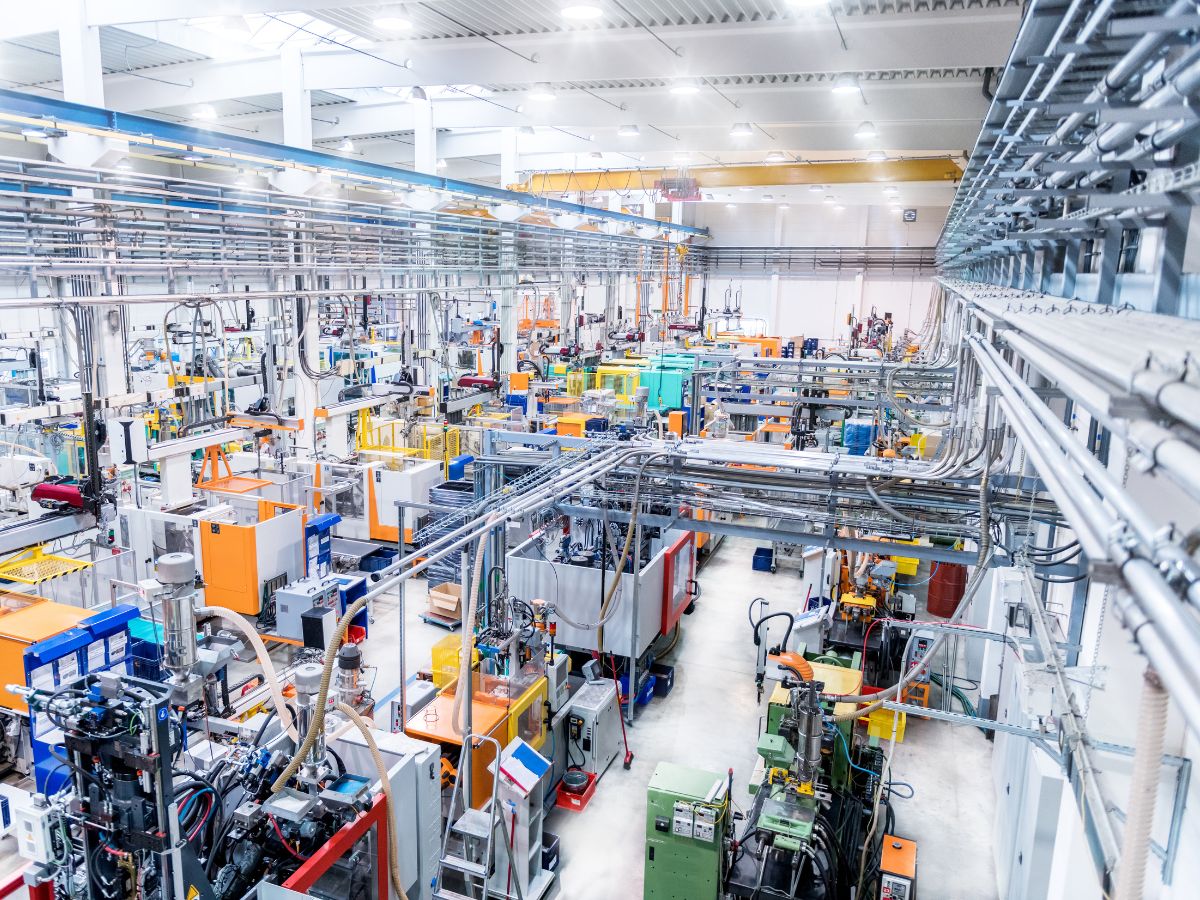Why Your Manufacturing Team Still Thinks They're Not Part of Supply Chain (And How to Fix That)

Picture this: You're in a supply chain meeting discussing delivery delays, inventory shortages, and customer complaints. Meanwhile, your manufacturing team is in their own meeting, focused on production efficiency and cost reduction, completely oblivious to the chaos downstream. Sound familiar? You're not alone in this organizational soap opera.
This LinkedIn article on manufacturing's role in supply chain management perfectly captures this disconnect: "Manufacturing seems to have this attitude: 'We will manage our costs – you work on yours.'" It's like having roommates who each think they're responsible for different parts of the same apartment, wondering why the place is falling apart.
This manufacturing-supply chain divide isn't just an organizational quirk—it's costing you money, customers, and countless hours of firefighting. But here's the good news: fixing this disconnect is entirely achievable, and the results can transform your entire operation from a collection of competing departments into a well-orchestrated symphony.
Key Takeaways
- Manufacturing teams often operate as independent silos due to historical organizational structures and performance metrics that don't align with supply chain objectives
- The disconnect costs companies an average of 15-25% in operational efficiency through poor coordination, excess inventory, and missed delivery commitments
- Common barriers include conflicting KPIs, separate reporting structures, limited cross-functional communication, and technology systems that don't talk to each other
- Successful integration requires aligned incentives, shared visibility tools, cross-functional teams, and leadership commitment to breaking down departmental walls
- Modern supply chain platforms can provide the unified visibility and coordination needed to bridge manufacturing and supply chain operations
- Companies that successfully integrate manufacturing into their supply chain strategy see improved on-time delivery, reduced inventory costs, and enhanced customer satisfaction

The Great Manufacturing Divide: How We Got Here
Let's start with a reality check. The manufacturing-supply chain disconnect didn't happen overnight—it's the result of decades of organizational evolution that made perfect sense at the time but has become a liability in today's interconnected business environment.
Historically, manufacturing focused on one thing: making stuff efficiently. Their world revolved around production schedules, machine utilization, and cost per unit. Supply chain, on the other hand, emerged as companies realized they needed specialists to manage the complex web of suppliers, logistics, and customer demands. Each group developed their own language, metrics, and priorities.
The problem? They're solving different puzzles with pieces from the same box. As the LinkedIn article on manufacturing integration points out, "Plants don't consider themselves to be part of the supply chain." It's like having your left hand not knowing what your right hand is doing—literally.
The Hidden Costs of Living in Silos
This disconnect isn't just awkward—it's expensive. When manufacturing and supply chain teams operate independently, several costly problems emerge:
Inventory Nightmares: Manufacturing builds to their schedule while supply chain scrambles to manage the resulting inventory imbalances. You end up with too much of what customers don't want and not enough of what they do. One consumer products company mentioned in recent supply chain research was able to reduce finished goods inventory to just five days by aligning manufacturing capacity with market volatility—but only after breaking down the silos.
Customer Service Casualties: When manufacturing doesn't communicate production delays or quality issues quickly, supply chain can't proactively manage customer expectations. The result? Surprised customers, emergency expediting costs, and damaged relationships.
Efficiency Erosion: Without coordination, both teams optimize their own metrics at the expense of overall performance. Manufacturing might achieve great cost per unit while creating supply chain headaches that cost far more than the manufacturing savings.
Innovation Paralysis: New product introductions become exercises in frustration when manufacturing and supply chain aren't aligned on launch timing, capacity requirements, and market rollout strategies.
Breaking Down the Walls: Why Integration Seems Impossible
Before we dive into solutions, let's acknowledge why this problem persists despite everyone knowing it exists. The barriers are real and deeply embedded:
Conflicting Metrics: Manufacturing gets rewarded for efficiency and cost reduction. Supply chain gets measured on service levels and inventory turns. These metrics can actually work against each other, creating perverse incentives.
Different Time Horizons: Manufacturing thinks in production cycles and capacity planning. Supply chain lives in daily firefighting mode, responding to customer demands and market changes. It's like trying to coordinate a marathon runner with a sprinter.
Technology Gaps: Legacy systems often prevent real-time information sharing. Manufacturing uses production planning systems while supply chain operates in different platforms, creating information islands that don't communicate.
Cultural Differences: Manufacturing cultures often value stability and predictability. Supply chain cultures embrace agility and responsiveness. Both approaches have merit, but they need to work together.
The Integration Playbook: Making Manufacturing and Supply Chain Best Friends
Ready to bridge this divide? Here's how leading companies are successfully integrating manufacturing into their supply chain strategy:
Step 1: Align the Stars (and the Metrics): Start by creating shared KPIs that require both teams to succeed together. Instead of just measuring manufacturing efficiency and supply chain service levels separately, add metrics like order-to-delivery time, total cost of ownership, and customer satisfaction that require cross-functional collaboration.
Step 2: Create Cross-Functional Teams: Form integrated planning teams with representatives from both manufacturing and supply chain. These teams should meet regularly to discuss capacity, demand forecasts, and potential issues. Think of it as relationship therapy for departments.
Step 3: Invest in Visibility Technology: Modern supply chain platforms can provide real-time visibility into both manufacturing operations and downstream supply chain activities. When everyone can see the same information simultaneously, collaboration becomes natural rather than forced.
Step 4: Implement Sales and Operations Planning (S&OP): A robust S&OP process brings manufacturing, supply chain, sales, and finance together regularly to align plans and resolve conflicts before they become crises.
Technology as the Great Unifier
This is where modern supply chain technology becomes a game-changer. Platforms that integrate manufacturing planning with supply chain execution create the shared visibility and coordination that manual processes simply can't achieve.
Shyftbase's approach to full network management exemplifies this integration. Rather than treating manufacturing as a separate function, the platform connects production planning directly with downstream logistics, inventory management, and customer communication. When manufacturing schedules change, the entire supply chain can adjust in real-time.
The key is moving beyond systems that optimize individual functions toward platforms that optimize the entire flow. This requires technology that can handle the complexity of modern supply chain manufacturing stages while maintaining the flexibility to adapt to changing requirements.
Real-World Success Stories: When Integration Actually Works
Companies that successfully integrate manufacturing and supply chain operations see dramatic improvements. One automotive parts manufacturer reduced lead times by 40% simply by giving their supply chain team real-time visibility into production schedules and quality issues.
A consumer products company improved on-time delivery from 85% to 98% by aligning manufacturing capacity planning with supply chain demand forecasts. The secret? They stopped optimizing departments separately and started optimizing the entire flow.
These successes share common elements: leadership commitment, aligned incentives, shared technology platforms, and a willingness to challenge traditional organizational boundaries.
The Shyftbase Solution: Unified Operations from Production to Delivery
While many companies struggle with manufacturing-supply chain integration, Shyftbase's comprehensive platform addresses this challenge head-on. By connecting manufacturing planning with real-time analytics, inventory management, and route optimization, the platform creates a unified view of operations from production to final delivery.
The result? Manufacturing teams can see how their decisions impact customer delivery, while supply chain teams gain visibility into production constraints and opportunities. It's like giving both teams X-ray vision into each other's operations, eliminating the guesswork and finger-pointing that typically characterize these relationships.

Frequently Asked Quesions
Why do manufacturing teams resist being part of supply chain operations?
Manufacturing teams often resist supply chain integration due to historical organizational structures, different performance metrics, and cultural differences. Manufacturing traditionally focused on efficiency and cost reduction, while supply chain emphasized responsiveness and service levels. These different priorities, combined with separate reporting structures and limited cross-functional communication, created natural barriers. Additionally, manufacturing teams may fear losing autonomy or being blamed for supply chain issues beyond their direct control.
What are the main barriers to integrating manufacturing with supply chain?
The primary barriers include conflicting KPIs (manufacturing optimizes for efficiency while supply chain optimizes for service), different time horizons (production cycles vs. daily demand fluctuations), technology gaps between manufacturing and supply chain systems, separate organizational reporting structures, limited information sharing, and cultural differences between stability-focused manufacturing and agility-focused supply chain teams. Legacy systems that don't communicate effectively often exacerbate these challenges.
How can companies measure success when integrating manufacturing and supply chain?
Success should be measured using shared metrics that require both teams to collaborate effectively. Key performance indicators include total order-to-delivery time, overall equipment effectiveness (OEE) combined with service levels, total cost of ownership across the entire flow, customer satisfaction scores, inventory turns by product category, and first-pass yield rates that consider downstream impacts. The goal is creating metrics that can only be optimized through cross-functional cooperation rather than departmental silos.
What technology solutions help bridge the manufacturing-supply chain gap?
Effective technology solutions include integrated planning platforms that connect production scheduling with demand forecasting, real-time visibility systems that show manufacturing status to supply chain teams, collaborative planning tools that enable cross-functional teams to work together, advanced analytics that optimize the entire flow rather than individual functions, and supply chain platforms that extend from production planning through final delivery. Modern solutions focus on creating shared visibility and enabling coordinated decision-making across traditional organizational boundaries.
In Conclusion
The manufacturing-supply chain divide isn't just an organizational quirk—it's a fundamental barrier to operational excellence that costs companies millions in inefficiencies, missed opportunities, and customer dissatisfaction. But as we've seen, this disconnect is entirely fixable with the right combination of aligned incentives, cross-functional collaboration, and integrated technology platforms.
The companies that successfully bridge this gap don't just solve an internal coordination problem—they create competitive advantages through improved responsiveness, reduced costs, and enhanced customer satisfaction. They transform their operations from a collection of competing departments into a unified system optimized for overall performance rather than departmental metrics.
The future belongs to organizations that think beyond traditional functional boundaries and embrace truly integrated operations. The question isn't whether manufacturing should be part of supply chain—it's how quickly you can make that integration a reality.
Ready to eliminate the manufacturing-supply chain divide in your organization? Discover how Shyftbase's integrated platform connects production planning with supply chain execution, creating the unified visibility and coordination your teams need to succeed together. Schedule your demo and see how modern technology can transform departmental silos into collaborative advantages. Don't let organizational boundaries limit your operational potential.
